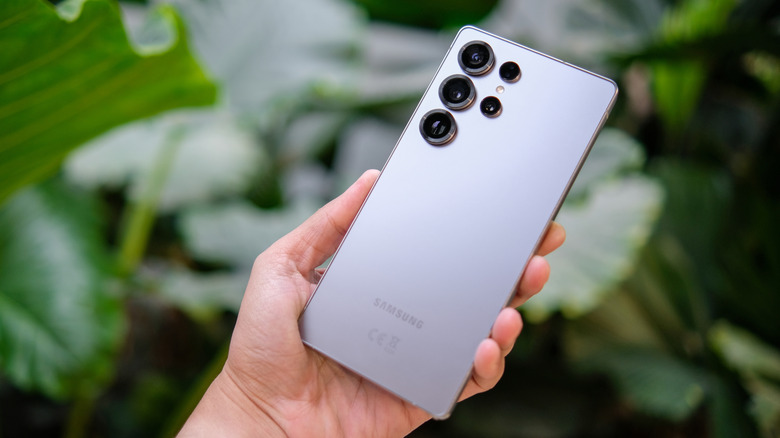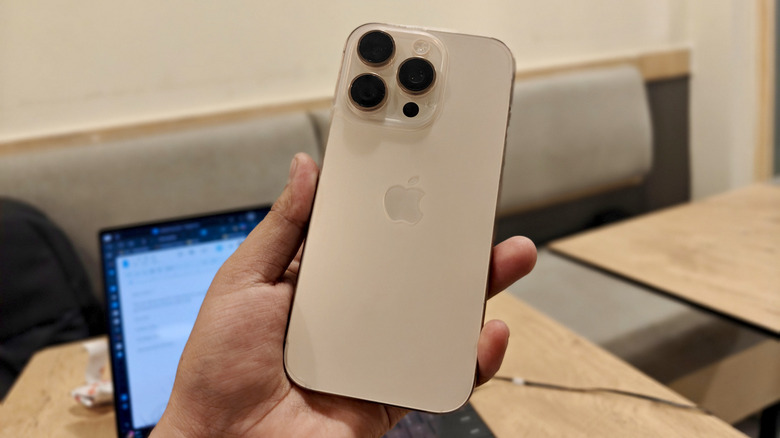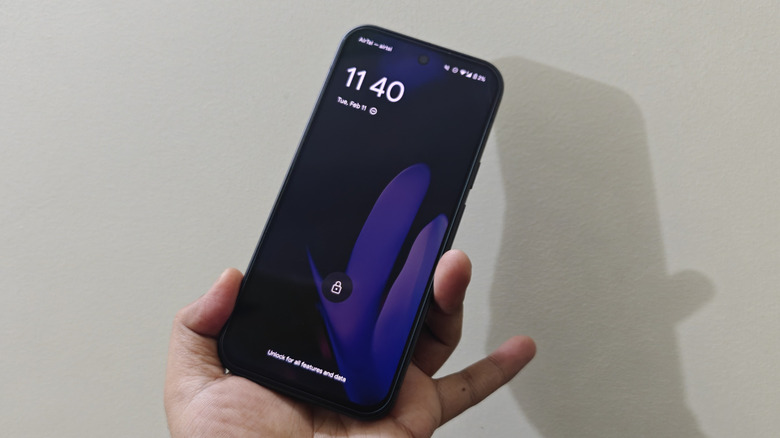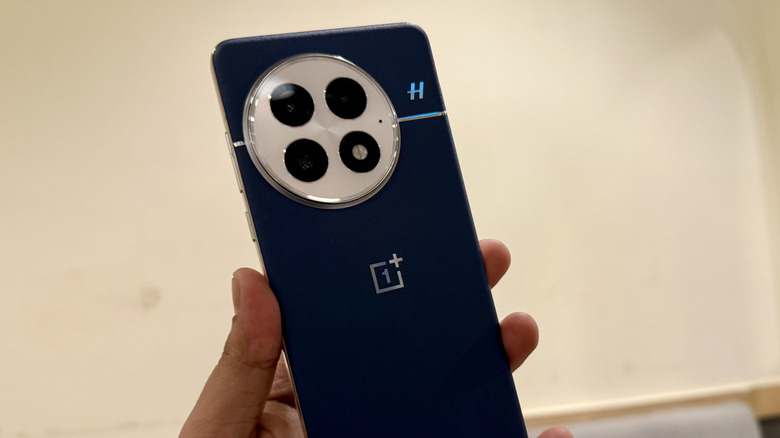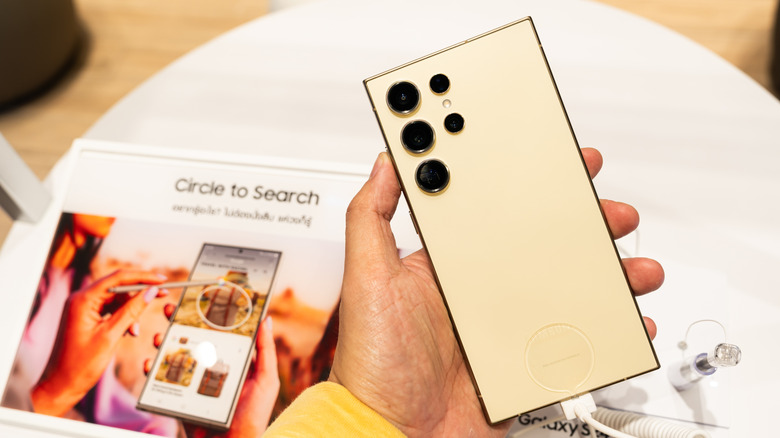4 Affordable Samsung Galaxy S25 Ultra Alternatives
The Samsung Galaxy S25 Ultra is arguably one of the finest Android smartphones out there right now. It has all the firepower that Qualcomm can offer, fantastic design, impressive cameras, and refined software that is brimming with practical AI features. Plus, it offers a stylus that serious note-takers have appreciated for years. The Samsung flagship scored an impressive 9/10 in SlashGear's review, which is no small feat for any device. However, it is not without its faults.
At a starting price that even eclipses Apple's latest and greatest, it offers a set of internal hardware advancements that are far from substantial. In my time with the phone, I couldn't help but feel that there are definitely better options than paying $1,300. Save for slightly rounded corners, the design is fundamentally the same as its predecessor. It's iterative at best, but not standout by any stretch of the imagination. Samsung's much-hyped Galaxy AI features fall short of expectations, as they serve mainly as gimmicks and rarely meaningful tricks. The experience isn't transformative, especially after switching from a Gemini-driven device like the Google Pixel 9 for a few months.
The camera hardware is also not the definitive best out there, and Samsung's unique flavor of algorithmic color processing remains divisive. Then there's the battery charging situation, which is not even halfway up to the same level as the likes of the OnePlus 13. The lack of Bluetooth functionality on the S Pen is another disappointment. Thankfully, there are plenty of capable alternatives out there that can fill the Samsung gap. I have tested them all extensively, and to retain the competitive streak, I'm only listing flagships with fittingly top-tier innards, but with a lower asking price to help you make the best pick.
iPhone 16 Pro Max
The most obvious choice for a Galaxy S25 Ultra replacement is Apple's own big boy. Sitting at $100 lower than its Samsung's rival on the price ladder, the iPhone 16 Pro Max serves the most powerful mobile silicon out there. Apple is not quite setting memory benchmarks with it, but the graphics performance is fantastic on this one. For gaming enthusiasts, it definitely helps that Apple Arcade offers a far better catalog of games than the Android side of the ecosystem.
The OLED screen on the iPhone 16 Pro Max is one of the brightest and sturdiest out there, and paired with the well-tuned UI animations on iOS 18, you get a vibrant and fluid visual experience. Another core strength of this phone is its battery endurance, which can easily last a whole day of usage. Unfortunately, charging speeds are not Apple's strength, but they are not too far behind Samsung, either. Plus, the MagSafe ecosystem of accessories makes it a far more versatile phone than any other rival out there.
But it's really the cameras that set the iPhone 16 Pro Max apart. Video capture output, especially the consistent focus and stabilization, are a class apart. Color performance is impressive with high accuracy and bokeh details, and there are no shutter woes, either. Then there are pro-grade features such as LOG capture, the fantastic photographic styles system, an audio zooming system to control directional channels in videos, and deep smartphone-level editing controls. The sum total is a phone that is secure, blazing fast, and a total camera champion.
Google Pixel 9 Pro XL
Most people would pick the Galaxy S25 Ultra for its camera chops, and rightfully so, for there are not many phones that can beat it. The Google Pixel 9 Pro XL is one of those special phones. It offers a fantastic 120Hz display that renders beautiful colors, paired with one of the best implementations of auto-brightness and HDR tuning I have seen on a phone so far. The panel is responsive, and after a long spell of missteps with previous Pixel-series devices, this phone's fingerprint sensor offers a reliable and snappy unlock experience.
Powering the phone is Google's own Tensor silicon, which is not nearly as fast as the processors inside the iPhone 16 Pro Max or the Galaxy S25 Ultra, but it's still plenty competitive to handle graphics-intensive games and long sessions of high-res video capture with ease. The design has also won a lot of praise, especially due to the standout aesthetic language. Plus, the IP68 tier ingress protection ensures that you won't have repair nightmares if it falls in a pool or gets treated to a liquid spill.
The standout element, however, is the camera system. Riding atop Google's famed computation photography chops and a powerful camera stack, the Pixel 9 Pro XL excels with reliable exposure controls and class-leading highlights in the photos it captures. The focus lock is quick, and noise reduction is not as aggressive as Samsung or Apple smartphones. Google has made impressive progress with video stabilization on its latest flagship, and the zoom camera doesn't disappoint either. Plus, the whole Magic Editor stack on the Google Photos app delivers some amazing and fun artistic results.
OnePlus 13
This is the budget champion that doesn't cut any serious corners, the first from OnePlus in a long time. I have the blue version of the phone, which features a beautiful leather finish and a quad-curved OLED display that is adequately bright and delivers ample saturation output. OnePlus even creates an algorithmically tuned usage mode that lets users interact with the on-screen elements even if there are water droplets on the panel or while wearing clothes.
This phone offers a massive 6,000 mAh silicon carbide battery, which easily lasts a whole day. But what sets the OnePlus 13 apart from its competition is the charging convenience. This phone supports 100W wired charging, which can fill up the tank in roughly half an hour. Moreover, it enables 50W wireless charging, which is still faster than what Google, Apple, or Samsung flagships can achieve even in wired mode.
The OxygenOS 15 software has also made a massive leap in terms of fluidity. Plus, just like its Samsung rival, it comes with all the fundamental Google Gemini AI smarts, ranging from writing tools and image editing to support for third-party extensions. The biggest improvement, however, is the camera stack. The triple rear camera array not only serves massive sensors, but also comes with a refined processing system that delivers lovely images with great dynamic range, on-point color reproduction, and beautiful bokeh shots. Plus, it costs a few hundred dollars less than the Galaxy S25 Ultra, so there's that crucial perk as well.
Samsung Galaxy S24 Ultra
I often advise my friends to leave behind the charm of a flashy new phone, and instead, invest in its predecessor. This recommendation is particularly well-suited in the context of flagship phones. If you're enamored by the Galaxy S25 Ultra, you can go with the Galaxy S24 Ultra without losing much, but with a couple of benefits: a lower asking price and a stylus with Bluetooth gesture support. This phone offers a solid build quality with an appealing minimalist design, and plenty of colors to pick from.
Qualcomm's yesteryear flagship, the Snapdragon 8 Gen 3 SoC, is still competitive enough that it won't leave you yearning for more firepower within the next few years. Plus, it comes with most of the AI shenanigans that you would get on the Galaxy S25 series, including offline AI access courtesy of Gemini Nano running locally. The battery and charging speed figures are identical, so you are not missing out on that front.
As far as camera performance goes, the Galaxy S24 Ultra can still stand toe to toe with the best smartphones out there. Samsung's unique approach with fitting two zoom cameras delivers impressive results, and if you are someone who enjoys plenty of saturation in their photos and videos for social media posting, this phone won't leave you disappointed. Another strength of the phone is that it captures fantastic portrait shots with impressive subject separation, does a fantastic job at exposure control, and retains a stunning level of detail in still shots.
